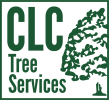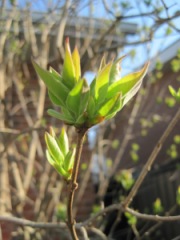Looking around London, Ontario you don’t see many signs of spring. There are mountains of snow in parking lots, not to mention beside driveways galore. The weather forecast suggests that it’ll be mid-April before we see any consistently spring-like weather.
I say, Phooey!
The sunshine that we have seen this week has helped many winter-beaten spirits though. If you raise your eyes above the snow-line, you can’t help but spy something that is a harbinger of spring; tight buds getting ready to burst once the temperatures rise!
So what’s the deal with those little nubs at the end of a tree’s barren winter twigs anyway? Well, let’s look at a few buds and find out.
Tree Buds
For starters, not all buds are found at the end of stems. They can also be found at leaf axils or elsewhere on a plant. Likewise, not all buds contain leaves. Some are there for reproductive purposes, like producing flowers and fruit. Look at this chart from Wikipedia and I’ll explain further;
Ok, so the bud you see in the picture above is from a lilac tree and is an example of a terminal leaf bud with opposite axillary buds. It is resting, or dormant, which means that it was formed at the end of last season. This scaly bud has a vegetative purpose, in that once the temperatures climb and the buds burst, leaves will emerge from it.
Incidentally, the deciduous trees you find in our part of the world can be readily identified in the winter via an inspection of its twigs. In fact, without a tree’s leaves, the bark and buds are the most telling indicators in identifying trees. And just like when identifying leaves, buds are arranged in opposite and alternate patterns. Makes sense, when those leaves come from the buds that you see now.
So if you know whether a tree has an alternate or opposite leaf pattern, half of the challenge of identifying your tree in winter instantly disappears. For example, hickory, oak and birch all have alternate leaf patterns, so you will find the buds on a twig alternating as well. Ash, maple and buckeye all have opposite patterns. The winter tree key at Envirothon, and produced in part by the Ontario Forestry Association, is an excellent reference and includes colour photos to help you identify winter trees.
So are buds really a sign of spring? Well, in a round about way they are, as when they eventually burst the new leaves represent new growth and spring. Before that happens though, the trees need to fulfill a few requirements. For one, they need to experience sufficient numbers of cold days (chilling). I think we have met that requirement this winter! Once a tree has been chilled long enough, then it needs a period of warming (forcing) to trigger its buds to burst. I don’t know about you, but I certainly wouldn’t say that we have had any warm days yet this year. Maple Syrup producers would agree with me there, I’m sure.
The threat of global warming aside, this winter has been a pretty typical one. Yes, we’ve had a polar vortex and snow by the truck-load. As far as trees are concerned though, Autumn was plenty cold enough (I seem to recall that the snow started mid-November and never left) and there has been tonnes of snow to insulate tree’s roots. All we need is that rise in temperature, and I think we’ll see some happy, healthy trees come spring.
So what say you Bud? Are you ready for spring?







You must be logged in to post a comment.